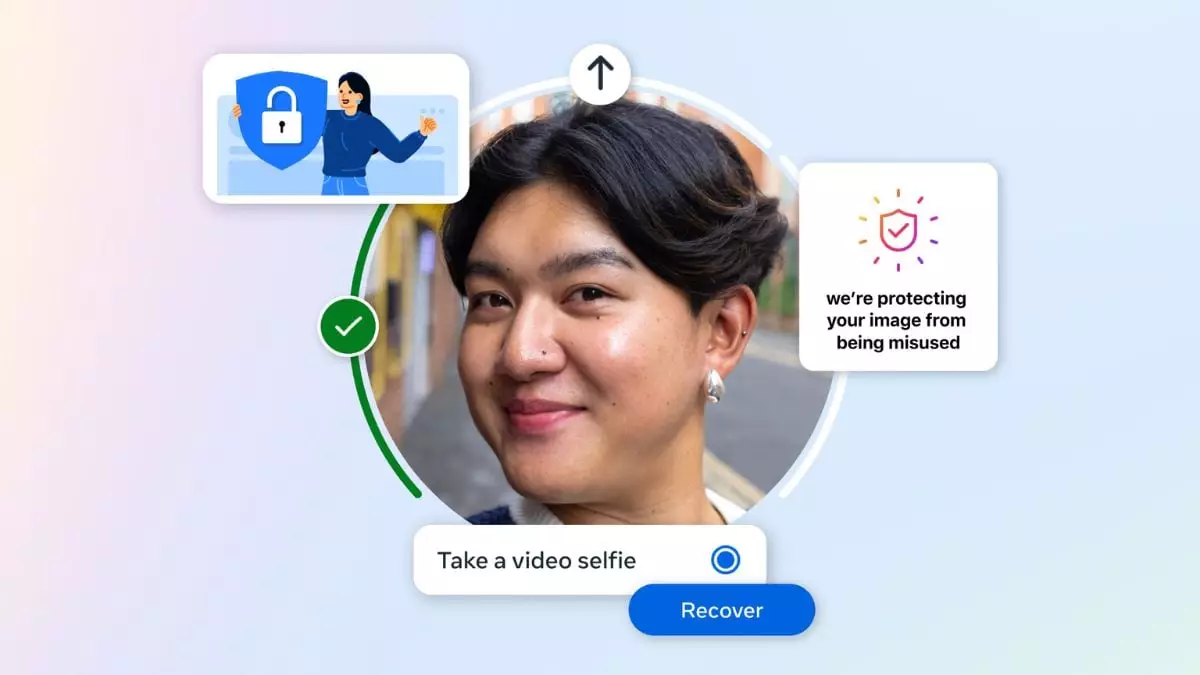In a recent move, Meta has launched tests for facial recognition technology aimed at both combating online scams and facilitating quicker account recovery for its users. This initiative is particularly responsive to the rampant issue of “celeb-bait” advertising scams—a deceptive practice wherein fraudsters exploit the images of celebrities to mislead users into engaging with harmful content. In its pursuit of a safer online ecosystem, Meta is not merely patching security holes; it is proactively addressing emergent threats while adapting to the evolving digital landscape.
The concept of “celeb-bait” ad scams involves tricking unsuspecting users into interacting with fraudulent advertisements that utilize the allure of celebrity images. In many instances, users may not realize they are being drawn into a scam until it’s too late. Scammers often capitalize on the inherent trust people place in celebrities and public figures, leading to significant security risks when users click on false advertisements. Meta identified this as a key area to target, implementing its unique facial recognition capabilities to directly address the issues stemming from these deceptive practices.
Meta’s approach to tackling these scams integrates its existing machine learning systems, which have been employed to sift through vast numbers of ads. By incorporating facial recognition technology, Meta is taking a substantial step forward in its ad review process. The system works by comparing faces from advertisements against verified images from public figures’ official Facebook and Instagram profiles. If a match is confirmed and deemed fraudulent, the ad will be promptly blocked, representing a significant enhancement in Meta’s ability to counteract unauthorized impersonation and fraudulent attempts.
In addition, the technology can discern impersonation accounts that undermine the integrity of public figures. Initially limited to a select group of celebrities, this process aims to refine its algorithms and improve detection speed and accuracy. The notification system that Meta plans to implement will inform affected public figures that they can expect enhanced protections, showing a commitment to safeguarding its users against impersonation and fraud.
Alongside its fraud detection efforts, Meta is also exploring the possibility of utilizing facial recognition for a more efficient account recovery method. Users often face hurdles when they are locked out of their accounts, either through security flags raised by automated systems or forgotten passwords. Traditionally, verifying one’s identity for access recovery necessitated submitting government identity documents, a step that can seem cumbersome and time-consuming.
With the introduction of video selfies, Meta proposes a streamlined process that could vastly improve user experience. By allowing users to upload a brief video selfie, the platform can use facial recognition technology to compare this data against existing profile images. This innovation promises to expedite regain access to locked accounts, reducing the frustration many face during security-related interruptions.
Amid these advancements, Meta has been forthright about its stance on user privacy. The company has assured that it will not store any facial data generated during these comparisons, ensuring a focus on protection without infringing upon individual privacy rights. This commitment to user data security is crucial as Meta navigates the delicate balance between enhancing cybersecurity and maintaining trust among its user base.
Meta’s exploration of facial recognition technology sets a precedent within the industry to safeguard users against fraudulent activity while enhancing the usability of their platforms. With its dual focus on combating celebs scams and expediting account recovery, Meta exemplifies a proactive approach in the face of growing cybersecurity challenges. As the company conducts its tests and fine-tunes its systems, the potential benefits for users are substantial, positioning Meta as a leader in innovative cybersecurity practices in social media.


Leave a Reply